This post may contain affiliate links. Please read our disclosure policy.
This single serving Carne Asada recipe features tender steak marinated in citrus, garlic, and spices, then seared on the stovetop for rich, bold flavor. It’s an easy way to enjoy the classic taste of carne asada in a perfectly sized portion.
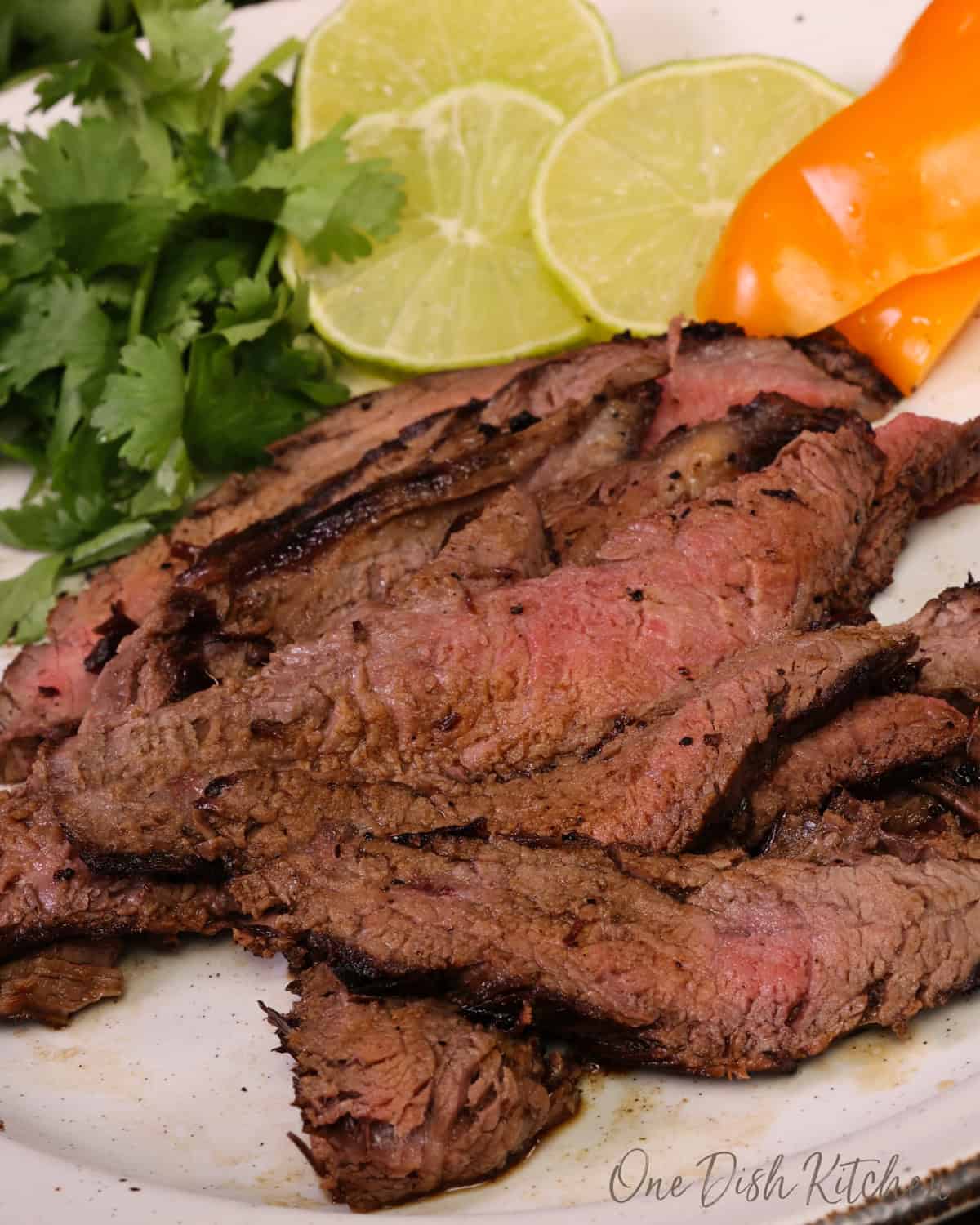
Featured Comment
“I was blown away by how good this Carne Asada recipe turned out. It was so tender, juicy & flavorful…”
– Gina
Why You’ll Love This Recipe
- Quick & Easy: Minimal prep and fast cooking time.
- Bold Flavor: Zesty citrus, warm spices, and classic Mexican taste.
- Versatile: Great in tacos, salads, bowls, or nachos.
- Scales Easily: Double or triple the recipe for more servings.
- No Grill Needed: Get delicious results right on the stovetop.
What I love about this single serving carne asada is how it delivers bold, smoky flavor with a simple stovetop method. The steak soaks up a zesty marinade made with citrus, garlic, and spices, then sears up beautifully in just minutes.
Prefer grilling? We’ve included easy grill instructions too. This is one of those recipes that feels special but is simple enough to make anytime.
Craving bold Mexican flavors? These single serving Mexican and Tex-Mex recipes deliver big taste in perfectly sized portions. Try beef enchiladas for one, single serve chicken fajitas, creamy Mexican corn dip for one, or taco soup for one.

Ingredients

If you have any ingredients leftover from this small batch carne asada recipe, check out our Leftover Ingredients Recipe Finder.
- Steak: Flank steak or skirt steak (arrachera) are traditional choices. Any lean cut of beef can be used, but cooking times may vary. Leftover flank steak works well in beef and broccoli stir fry for one, single serving Mongolian beef, or single serve pepper steak.
Marinade Ingredients: Olive oil, lime juice, apple cider vinegar, soy sauce, jalapeños, cilantro, sugar, ground cumin, salt, and pepper.
How To Make Carne Asada
These photos and instructions help you visualize how to make the best carne asada. See the recipe below for ingredient amounts and full recipe instructions.
- Make the Marinade: In a bowl, whisk together the olive oil, soy sauce, lime juice, vinegar, sugar, black pepper, and cumin. Stir in the garlic, jalapeños, and cilantro.
- Marinate the Steak: Place the steak and marinade in a zip-top bag. Seal and turn the bag a few times to coat the steak. Refrigerate for at least 30 minutes or up to 3 hours.
Alternative method: Place the steak in the bowl with the marinade, flip to coat, cover, and refrigerate.
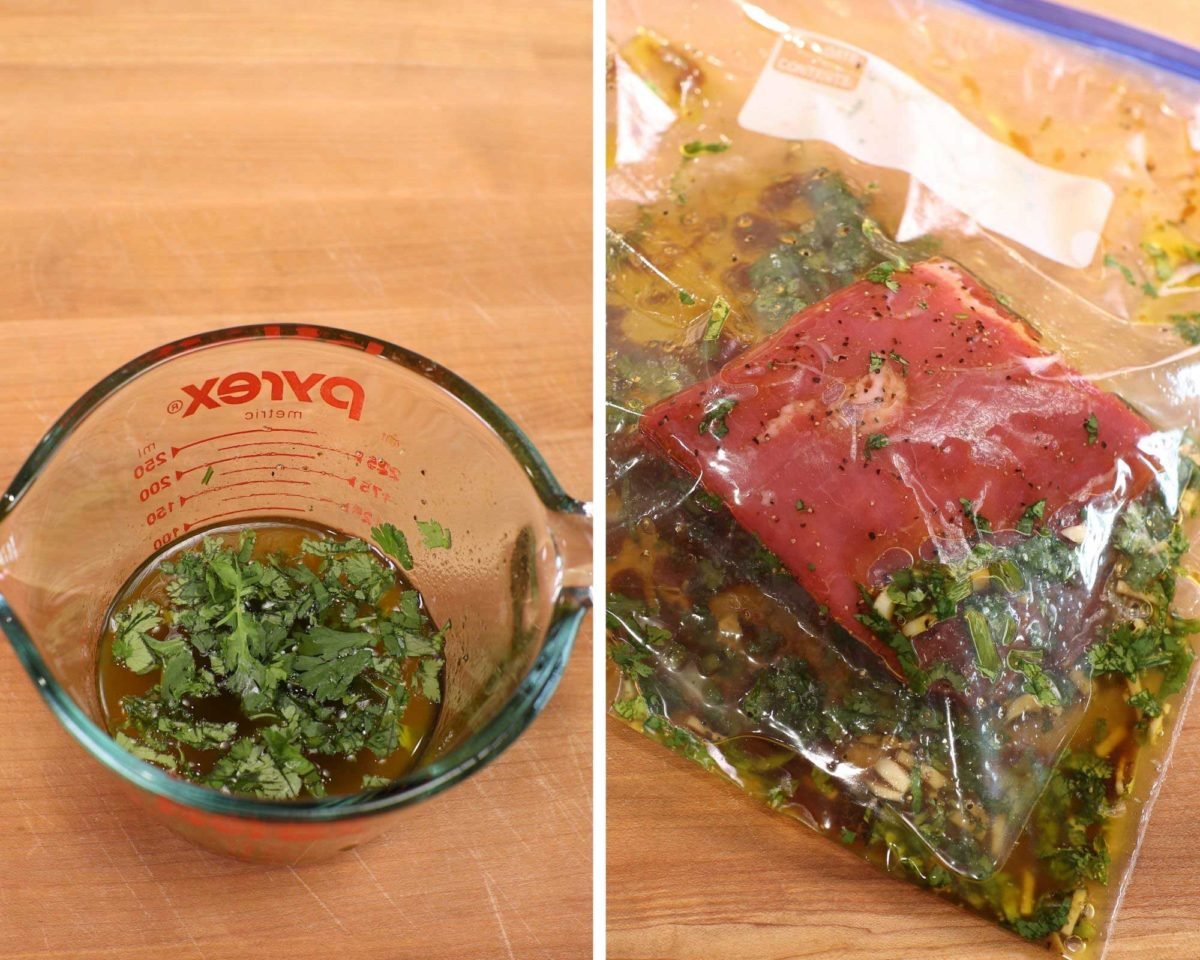
- Cook the Steak: Heat a heavy 10-inch skillet over medium-high heat for 1 minute. Add ½ tablespoon olive oil and heat for 30 seconds. Add the steak and sear for 4 to 8 minutes per side, or until it reaches your desired doneness.
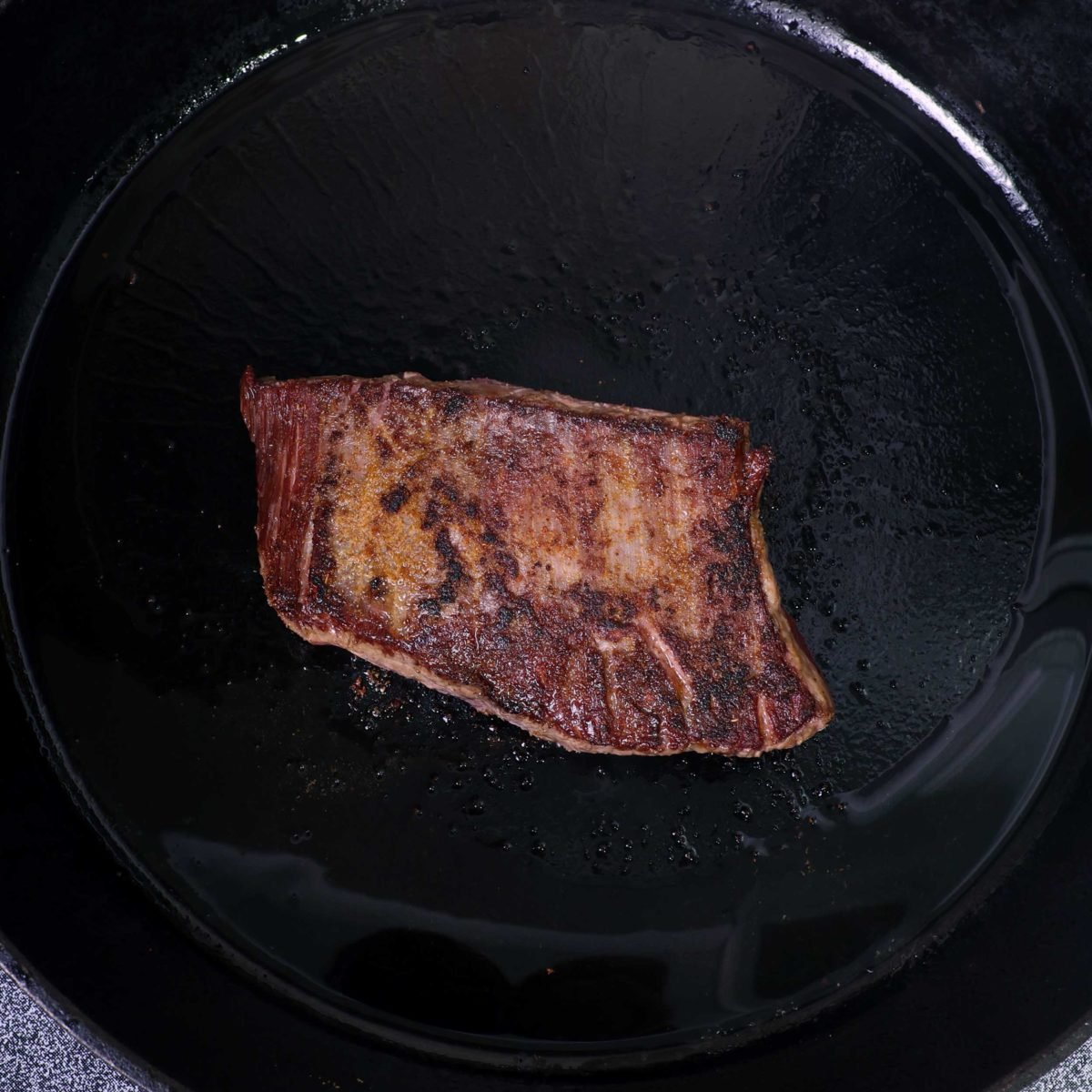
- Rest the Steak: Transfer the steak to a cutting board and cover loosely. Let it rest for 10 minutes to keep the juices in.
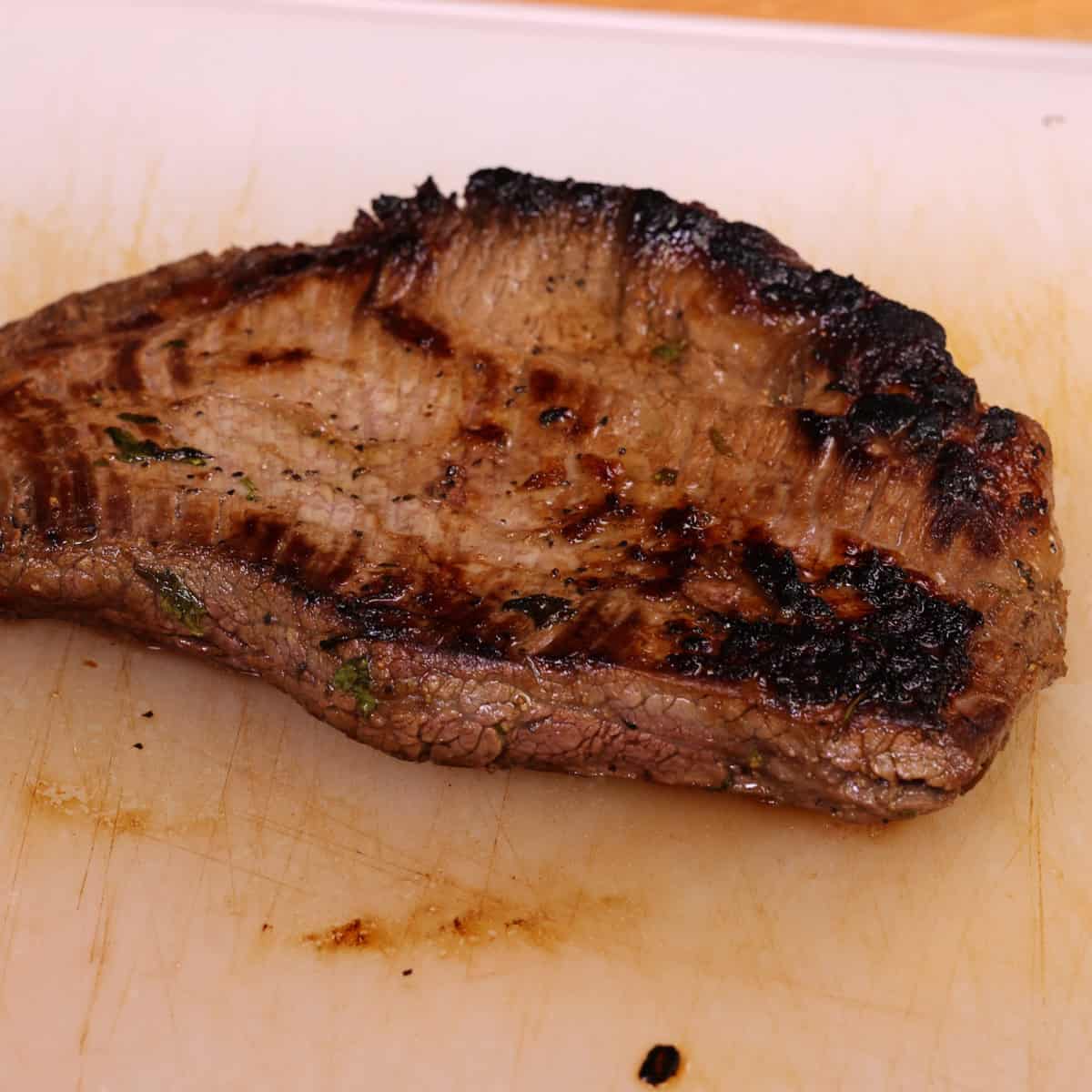
- Slice the Steak: Cut the steak across the grain using a sharp knife. Look for the direction of the muscle fibers and slice perpendicular to them for the most tender results.
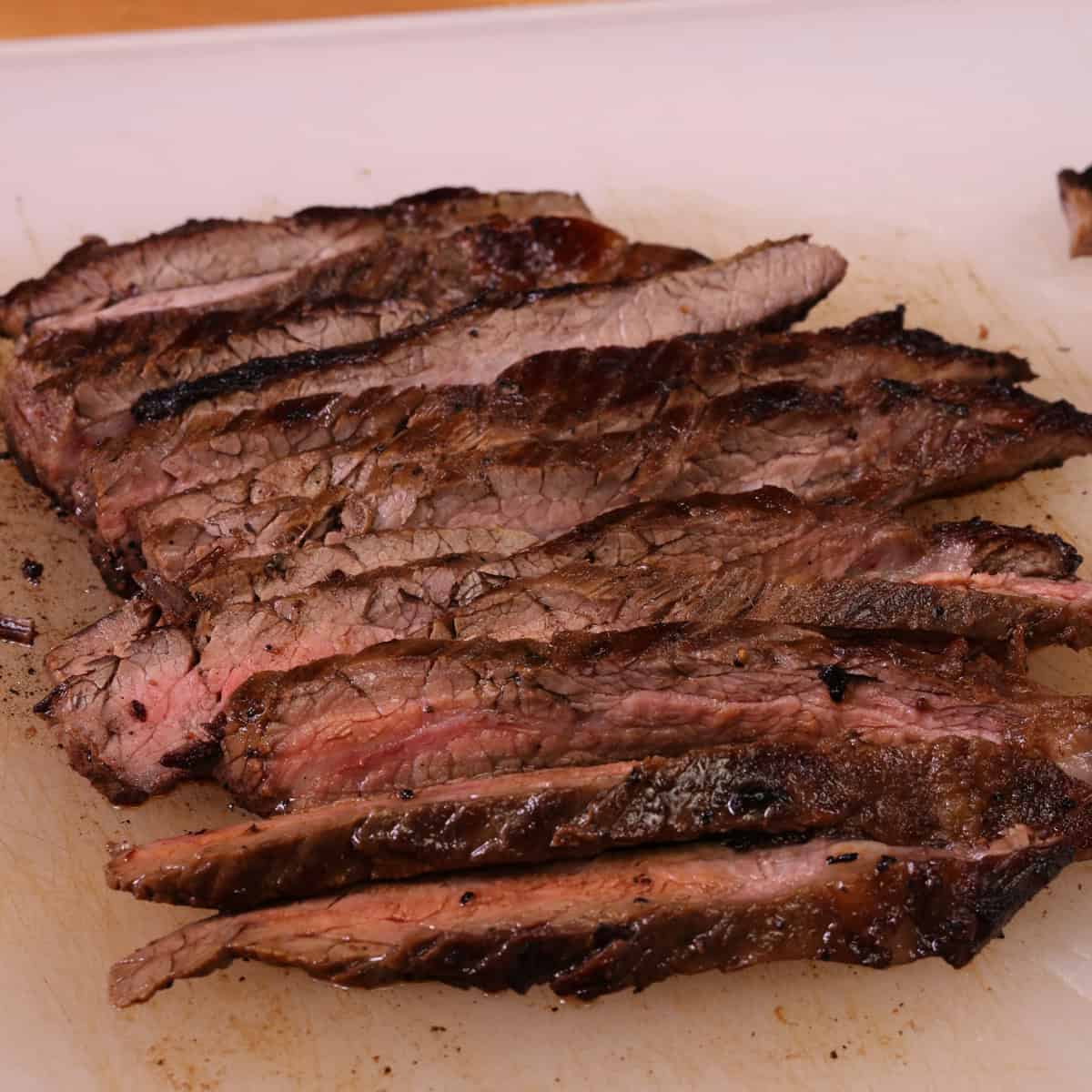
Serve: Enjoy carne asada with warm homemade tortillas and your favorite toppings like small batch pico de gallo, chopped onions, single serving guacamole, and lime juice. A simple skinny margarita pairs well too.
Grilling Option:
You can make carne asada on a grill for added smoky flavor. Preheat the grill on high, sear the steak for 1–2 minutes per side, then reduce to medium heat and grill for 8–10 minutes total, flipping halfway through. Let the steak rest for 10 minutes before slicing.
How To Warm Tortillas
- Skillet: Heat each side for 15–20 seconds over medium-high heat.
- Microwave: Stack tortillas on a plate, cover with a damp paper towel, and microwave 15–20 seconds.
- Oven: Wrap in foil and bake at 350°F for 10–15 minutes.
Expert Tips
- Read First: Review the full recipe and photos before starting for a clear understanding of each step.
- Bring to Room Temp: Let the steak sit out for 15-20 minutes before cooking to help it cook evenly.
- Slice Against the Grain: After resting, slice the steak at a 45° angle across the grain for tender pieces.
- Double if Needed: To serve two, simply double all ingredients.
Frequently Asked Questions
Flank steak or skirt steak are best for traditional carne asada, but sirloin or another lean cut can be used if needed.
Use an instant-read thermometer. Medium rare is 135°F and medium is 145°F. Avoid overcooking, as flank steak can become tough.
Store in an airtight container in the refrigerator for up to 4 days.
To freeze: Let it cool completely, then freeze in an airtight container or freezer bag for up to 2 months. Thaw in the fridge before reheating.
Reheat slices on the stovetop in a little olive oil over medium heat, flipping until warmed through.
More Single Serving Mexican Recipes
Here are a few of our most popular Mexican and Tex-Mex recipes:
Ways To Use Leftover Ingredients
If you have any ingredients leftover from this recipe, check out our Leftover Ingredients Recipe Finder or you might like to consider using them in any of these single serving and small batch recipes:
If you’ve tried this carne asada recipe or any recipe on One Dish Kitchen please let me know how you liked it by rating the recipe and telling me about it in the comment section below.
Also, if you take a picture please tag us on Instagram (@onedishkitchen) we’d love to see it!
Carne Asada For One
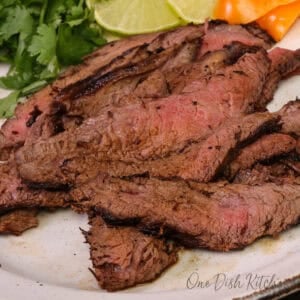
Equipment
Ingredients
- ½ pound flank or skirt steak
- ½ tablespoon olive oil
Marinade
- ¼ cup olive oil
- 2 tablespoons soy sauce
- ½ tablespoon lime juice
- ½ tablespoon apple cider vinegar
- ½ tablespoon sugar
- ½ teaspoon coarsely ground black pepper
- ¼ teaspoon ground cumin
- 1 clove garlic -minced
- 1 teaspoon chopped jalapeño chili pepper
- 2 tablespoons finely chopped cilantro leaves
Instructions
- Make the Marinade: In a bowl, whisk together ¼ cup olive oil, soy sauce, lime juice, vinegar, sugar, black pepper, and cumin. Stir in the garlic, jalapeños, and cilantro.
- Marinate the Steak: Add the steak and marinade to a zip-top bag. Seal and turn to coat. Refrigerate for at least 30 minutes or up to 3 hours.Tip: You can also marinate the steak in the bowl—just flip to coat, cover, and refrigerate.
- Cook the Steak: Heat a heavy 10-inch skillet over medium-high heat for 1 minute. Add ½ tablespoon olive oil and heat for 30 seconds. Add the steak and sear for 4 to 5 minutes per side, or until it reaches your desired doneness.Note: Flank steak is best cooked to medium rare (135°F) or medium (145°F) for best texture. Avoid overcooking, as it can become tough.* Rare steak: 125 degrees F* Medium rare: 135 degrees F (recommended)* Medium: 145 degrees F * Medium well: 155 degrees F (not recommended)* Well done: 165 degrees F (not recommended)
- Rest the Steak: Transfer to a cutting board, cover loosely, and let rest for 10 minutes to retain juices.
- Slice the Steak: Use a sharp knife to cut across the grain at a 45° angle. This shortens the muscle fibers, making the steak more tender.
Notes
- Read First: Review the full recipe and photos before starting for a clear understanding of each step.
- Bring to Room Temp: Let the steak sit out for 15-20 minutes before cooking to help it cook evenly.
- Slice Against the Grain: After resting, slice the steak at a 45° angle across the grain for tender pieces.
- Double if Needed: To serve two, simply double all ingredients.
Nutrition
The information shown is an estimate provided by an online nutrition calculator. It should not be considered a substitute for a professional nutritionist’s advice.
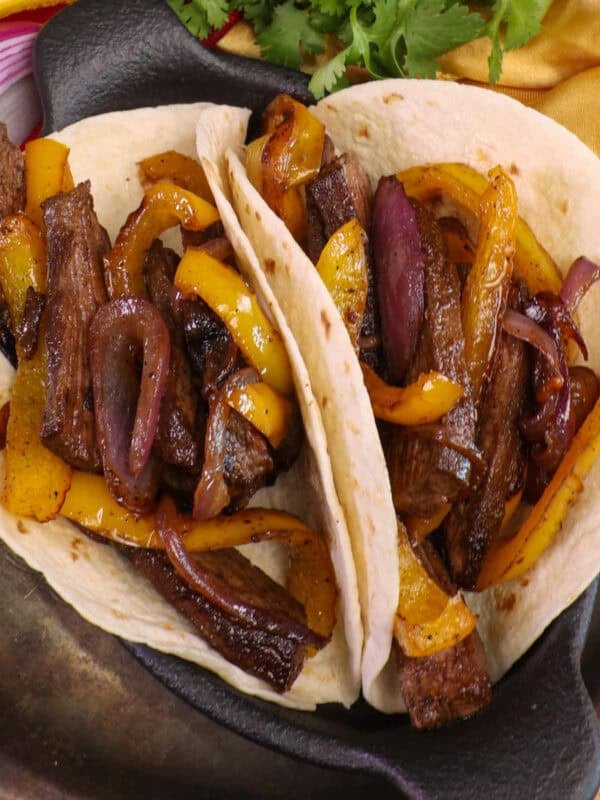
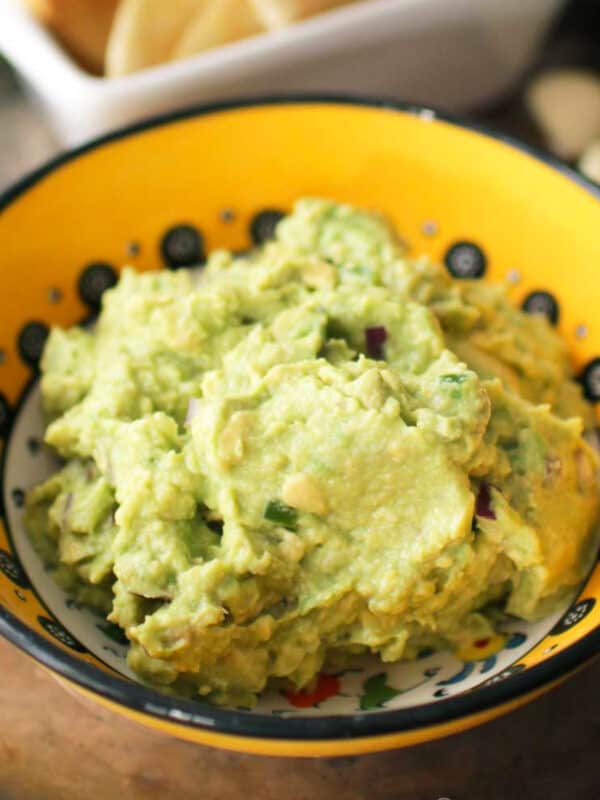
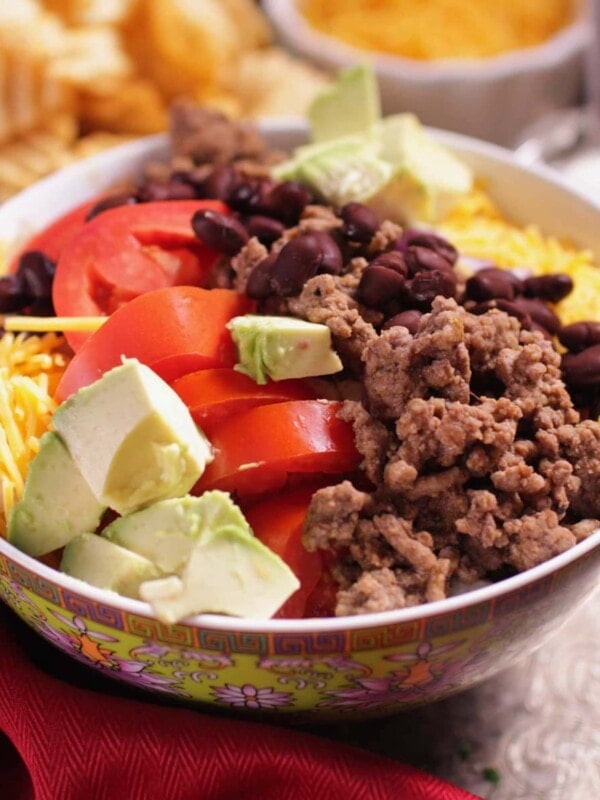



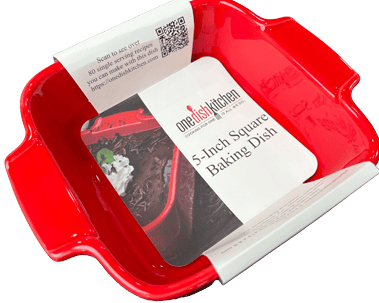








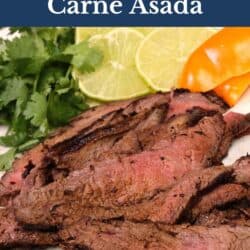
Will a 1” rib eye work for this recipe
Yes, ribeye is already a tender and flavorful cut, so you won’t need to marinate it as long as you would tougher cuts like flank or skirt steak. About 30 minutes to 1 hour is usually enough.
I followed the ingredients exactly and marinated it 3 hours. While the result was very tasty, the steak was very tough. I read somewhere that marinating the flank than 30 min results in a tough steak. The taste was spot on however.
Hi there! I’m glad you enjoyed the flavor of the carne asada! It’s great to hear the taste was spot on. I’m curious about how you sliced your steak. If the steak wasn’t sliced against the grain, it could be the reason it turned out tough. Cutting against the grain means slicing perpendicular to the muscle fibers, making them as short as possible. Even a perfectly cooked steak can be chewy and tough if sliced parallel to the grain, leaving you with long muscle fibers. Thanks for your feedback!
Yes, I did slice against the grain. Then I tried slicing the rest of the steak at a diagonal against the grain in thinner slices and it was great! By the way, I bought all the ceramic cookware in red, and love them. The quality is great and they are so cute! I made many of your recipes weekly for the past month or so. Thank you for your creative work!
Thank you so much for your follow-up! I’m so glad to hear that slicing the steak at a diagonal did the trick! I’m also very happy to know that you love your new cookware – thank you!
I was blown away by how good this Carne Asada recipe turned out. It was so tender, juicy & flavorful. I wanted to use flank steak but the store I went to was out, so I used skirt steak. I was skeptical about using skirt steak because in the past, it has been tough or chewy, but this time it was perfect. I followed the recipe except for a few tweaks here & there. I didn’t have any apple cider vinegar, so I used red wine vinegar, & also added a bit of lemon juice & orange juice to the marinade, on top of the limes. Next time, I’m gonna get the apple cider vinegar & try finding a good flank steak, can’t wait. By the way, I live in San Antonio, TX & I truly believe this is the best tasting carne asada I’ve ever had, including from Mexican restaurants here. Thanks for this wonderful recipe!
Thank you so much, Gina. I’m so happy you enjoyed it and I appreciate your comment so much!
I do have 1 question. When I left the steak in the marinade overnight (about 18 hours), it turned gray. Is that normal? I still cooked it & it tasted great, but I was a bit worried. I’ve made it several times & only left it overnight once, other times it was only in the marinade a few hours. Is there anything I should do different to keep that from happening? I’m just wondering for future reference cause I love the recipe.
I’m so glad to hear you’re loving the carne asada recipe! The gray color you’re seeing is completely normal when marinating for an extended period. The acidic components of the marinade, like lime juice and vinegar, can cause the surface of the steak to change color, but it’s perfectly safe to eat. If you’re concerned about the color change, you can opt to marinate the steak for a shorter duration, like 1-3 hours, which is enough time to infuse those delicious flavors without the color shift.